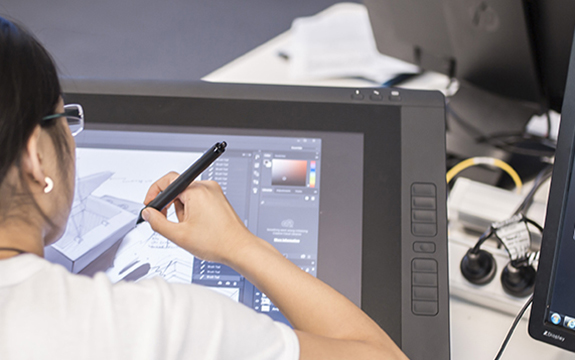Twice as nice: STEM students to double up on industry experience

From 2022, Swinburne will more than double real industry experience for its newly commencing bachelor degree STEM students.
In summary
- Newly commencing Swinburne students completing STEM undergraduate degrees will reap the rewards of more than double the time usually spent on work integrated learning experiences from 2022
- Students can gain up to eight work integrated learning experiences in their undergraduate degrees – that is up to six more industry experiences than some other universities
- It builds upon an already strong work integrated learning program with proven outcomes
Students completing STEM undergraduate degrees at Swinburne will reap the rewards of more than double the time usually spent on work integrated learning (WIL) experiences from 2022.
Experience is more essential than ever
Small and medium sized businesses simply do not have the time or budget to train graduates, and larger companies are seeking the best talent in market, so demand for university graduates who come ready-armed with experience has never been greater.
Swinburne is simultaneously meeting this demand, and preparing its students for the future of work, through its innovative work integrated learning programs which are designed to give students real industry experience as part of their studies.
Real industry projects, every year, from year one
Newly commencing Swinburne students can gain up to eight work integrated learning experiences in their undergraduate degrees – that is up to six more industry experiences than some other universities. The change means students will work on real industry projects that are co-created with industry every year, from year one.
Professor Emad Gad, Dean of Swinburne’s School of Engineering, says Swinburne offers work integrated learning experiences unique to the higher education sector.
‘Unlike many other undergraduate courses with a work integrated learning offering, Swinburne’s new course structure in degrees such as our Bachelor of Engineering (Honours), Bachelor of Computer Science, Bachelor of Science and Bachelor of Aviation is unique in that the experiences are multiple, occur throughout the course, and most importantly – students don’t need to apply for them,’ says Prof Gad.
‘Our Bachelor of Engineering (Honours) degree now has one work integrated learning experience every semester. Students can really embed what they learn from each experience and further develop their skills and professional purpose throughout their studies.’
Previous industry partners in the program include renowned organisations such as Engineers Without Borders (EWB), Dulux and Turner and Townsend.
According to Alison Stoakley, Senior Manager, Education at Engineers Without Borders (EWB), the program opens up the space for new ideas, questions and challenging routine ways of thinking – the kind of mechanisms that create real innovation in their work.
‘Swinburne students use their research skills, technical knowledge and creativity to either deepen or accelerate live EWB technology development projects alongside our staff team. In working toward our vision of “a world where technology benefits all”, EWB and our partners are facing complex challenges,’ says Ms Stoakley.

Engineering student Lily (centre) completed her work integrated learning at NAB as a software engineer. Read her work integrated story.
WIL is in our DNA
While this extra boost to work integrated learning is unique to engineering, science, IT and Aviation at Swinburne, work integrated learning itself is not.
Swinburne first launched its industry-based learning program back in 1963. Since then, its program has gone from strength to strength.
Last year, Swinburne announced guaranteed work integrated learning for every commencing Swinburne bachelor degree student.
Swinburne’s emphasis on learning through doing is proving successful, too. The 2019-2021 QILT Graduate Outcomes survey found that Swinburne bachelor degree graduates earned the highest of all starting salaries in Victoria.
Swinburne’s extensive partnerships with leading Australian and global organisations place the university in an ideal position to deliver on our bold guarantee.
-
Media Enquiries
Related articles
-

- University
Update on 131-133 Union Street, Windsor - December 2025
A December 2025 update from Swinburne University of Technology on the property at 131–133 Union Street, Windsor.
Monday 08 December 2025 -

- University
Swinburne launches Australian-first Undergraduate Certificate of Higher Education Studies
Swinburne has launched an Undergraduate Certificate of Higher Education, in an Australian-first that offers a new formal qualification to those who complete tertiary education but fall short of a degree.
Wednesday 10 December 2025 -

- Technology
Swinburne-led network to guide AI use in youth services
Swinburne’s Dr Joel McGregor, Dr Linus Tan and Dr Caleb Lloyd have established the Responsible AI in Youth Sectors Network. The collaborative network aims to guide the fast-growing use of artificial intelligence in youth services across Victoria.
Friday 12 December 2025 -

- Astronomy
- Technology
- Health
- Science
- University
- Sustainability
- Engineering
Swinburne highly cited researchers reach the top in 12 fields
Ten Swinburne academics have been named on the Highly Cited Researchers 2025 list, released by Clarivate
Tuesday 02 December 2025 -

- University
Over 550 students don caps and gowns to graduate from Children’s University Swinburne
Over 550 students from 34 schools have graduated from Children’s University Swinburne, celebrating over 45,000 hours of learning beyond the classroom this year.
Wednesday 03 December 2025

